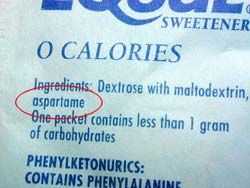Methanol is one of a host of alcohols normally produced during the fermentation of carbon-based compounds. An alcohol is basically a water atom (H20) with one of the hydrogen atoms replaced by a chain of carbons and their attached hydrogen atoms. Methanol (CH 3OH) is the simplest alcohol with a chain consisting of a carbon atom with three hydrogen atoms attached. Ethanol (CH3 CH2OH), the intoxicating ingredient in beer and other alcoholic beverages, has a chain that's twice as long.
Methanol can be distilled from fermented wood, so you may know it as wood alcohol. It's an ingredient in commercial products like antifreeze, glass cleaner, and paint thinners, but many people regularly drink other, more innocuous products that contain methanol. Methanol is found naturally in fruit juice and distilled spirits such as whiskey, wine, and beer. A typical glass of wine contains a small amount of methanol, from 0.0041 to 0.02 percent by volume. In comparison, the same glass will have about 10-15 percent ethanol. Methanol is much sweeter than ethanol, and even a small amount adds flavor to these beverages. This sweetness is what makes methanol attractive to use in an artificial sweetener.
All alcohols are toxic to some degree, but the dark side of methanol lies in the metabolites produced during its breakdown in the body. The same set of enzymes digest both methanol and ethanol. This stepwise degradation eventually yields the final products of carbon dioxide and water. The process prevents ethanol from building up to toxic levels in the body. But the small difference in the structures of the ethanol and methanol molecules means that the intermediate steps of the same process turn methanol into compounds that are far more dangerous than methanol itself!
In the first enzymatic reaction, methanol is broken down into formaldehyde. If you've ever dissected a frog in biology class, you may have witnessed one of the many uses of this chemical. Formaldehyde reacts with the amino acids in proteins. Proteins are chains of amino acids that fold to form very unique structures. The way these chains fold gives proteins the proper shape and the flexibility to interact with other molecules. Formaldehyde diffuses into tissues and cells where it forms crosslinks between different amino acids. The protein is stuck rigidly in whatever conformation it was in and is no longer able to carry out any reactions! This property makes formaldehyde useful for a number of chemical processes that fix things in a particular state. Some examples are:
- embalming
- leather tanning
- corrosion prevention
- wood finishing
Formaldehyde may also cause cancer in humans, but this requires long-term exposure. Formaldehyde doesn't stick around long in your body because it is so rapidly metabolized to formic acid by the second enzyme in this metabolic pathway. Formic acid is also extremely toxic to humans. It disrupts the function of a cell's mitochondria. Mitochondria normally serve as the "powerhouse of the cell" (for more information on mitochondria, see How Cells Work) and disrupting their function is like abruptly shutting down a nuclear reactor. Not only do all the cellular processes stop for lack of energy, but the cells themselves are blown apart by a massive accumulation of different molecules involved in energy production. The cells that make up the optic nerve are exquisitely sensitive to formic acid, which is why blindness is so closely associated with methanol poisoning.
Does aspartame produce enough methanol to harm people? The short answer is, "there is a lot of controversy around this question," as you will see in several of the links below. Most people regularly consume up to 10 mg of methanol per day as part of their normal diet. One 12-ounce can of aspartame-sweetened soda contains about 200 milligrams of aspartame [reference]. You'd add a tenth of this amount to your diet as methanol following digestion (20 mg).
For more information about aspartame and related topics, see the links on the next page.

